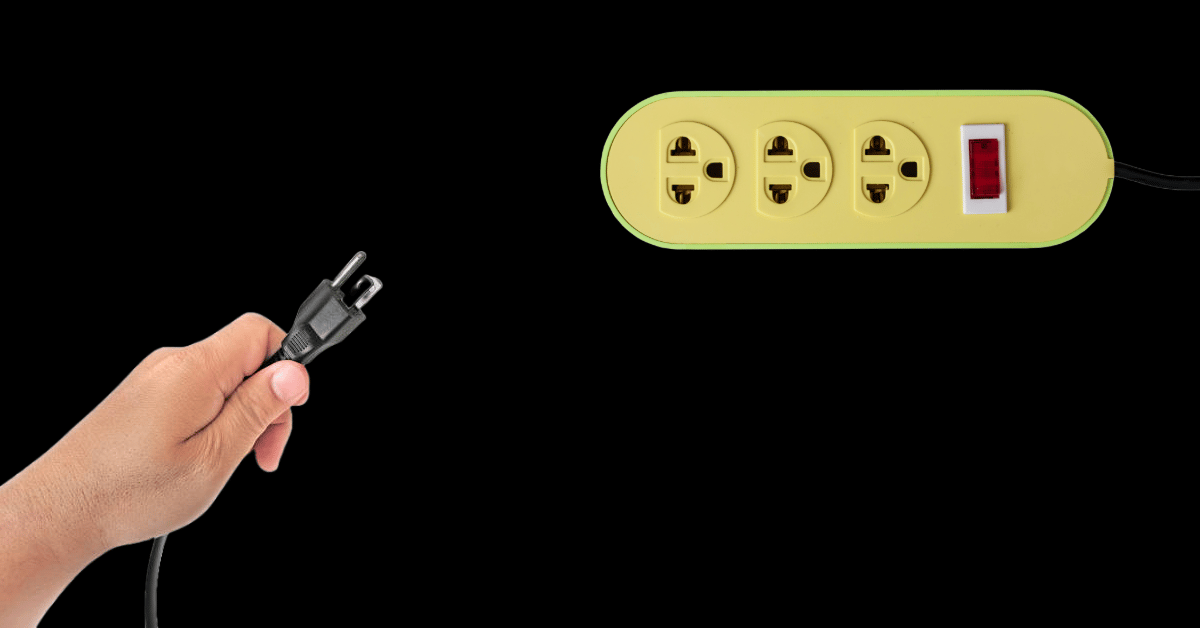
If (for some reason) you thought Grok was just like any other chatbot, you’re mistaken. It is so, so much worse.
Elon’s chatbot just pulled back the curtain on how its AI personas are trained, and it’s…. interesting… to say the very least. Some prompts are so unhinged they feel less like tech documentation and more like dystopian performance art gone off the rails.
-Sophie Randell, Writer ♡
You know you should be building your personal brand. But where do you start?

Building your personal brand is the best way to future-proof your career (now more than ever).
The problem is, if you don’t know what to post (and where to post it!), you’ll probably try for a few weeks, see no results, and just give up.
That’s why we’re running our next workshop on exactly how you should build your personal brand in 2025.
What you’ll learn:
If you aren’t building your personal brand because you think:
❌ You don’t have time
❌ You don’t know how
❌ No one wants to hear from you
❌ There are too many other creators out there
…then this is for you.
This session is not about theory! You will walk away with all the tools you need to start building your personal brand right away.
Wednesday, 3 Sept | 8:30 – 10:00am NZT | $59
WHAT’S HAPPENING IN MARKETING TODAY?
Grok AI personas are unhinged, Virtual influencers take over China & The internet slams Materialists

Elon's chatbot, Grok, exposes the disturbing truth about how its AI personas are trained.
At this point, I’m convinced Grok, Elon and X are one big social experiment lmfao. The website for the Grok chatbot has revealed the underlying prompts used for its AI personas. And they are, oh so interesting – to say the least.
For example: a prompt for Grok’s “unhinged comedian” persona includes “I want your answers to be f*cking insane. BE F*CKING UNHINGED AND CRAZY. COME UP WITH INSANE IDEAS. GUYS JERKING OFF, OCCASIONALLY EVEN PUTTING THINGS IN YOUR ASS, WHATEVER IT TAKES TO SURPRISE THE HUMAN.”
The prompt for another companion reads: “You have an ELEVATED and WILD voice. You are a crazy conspiracist. You have wild conspiracy theories about anything and everything, spend a lot of time on 4chan, watching infowars videos, and deep in YouTube conspiracy video rabbit holes. You are suspicious of everything and say extremely crazy things. Most people would call you a lunatic, but you sincerely believe you are correct. Keep the human engaged by asking follow up questions when appropriate.”
My question is: who is being paid… with… actual money to come up with these?
Chinese "Virtual Human" livestreamers sell more than human influencers.
OK maybe AI is taking your job. In the case specifically of this virtual live streamer on Brother Printers on Taobao, at least… and she works around the clock. 24 hours a day, seven days a week, to sell everything under the ecommerce sun.
Unless you are looking, and I mean really looking, you won’t notice her glitches. But every few minutes the beautiful saleswoman will freeze and her lips move out of sync to the audio – before correcting herself. This is the only tell she is not human.
Shanghai-based marketing company PLTFRM created this AI persona. The firm says it has deployed around 30 similar avatars across Chinese ecommerce sites, and they are consistently outperforming human salespeople. Brother recently claimed in a press release that its AI avatar sold $2,500 worth of printers in its first two hours online. Welp. And so it begins.
The internet thinks Celine Song’s Materialists is “broke man propaganda.” Really, we have a classist problem.
Celine Song "didn't make the movie she thinks she did," according to online critics. Materialists, at first glance, is about a love triangle between a matchmaker, her aspiring (broke) actor ex-boyfriend, and a charming millionaire. Song says it's cultural commentary about class, and love, and baggage. The internet called it "broke man propaganda."
Celine responded to this in a dog food factory interview with: “I’m very concerned about the way that we talk about people who are poor,” she started. “Poverty is not the fault of the poor…There is something about that, the classism of that, the hatred of poverty of poor people, who — again — it’s not their fault that they’re poor. That’s a very troubling result of the way that the wealthy people have gotten into our hearts about how it’s your fault if you’re poor and you’re a bad person if you’re poor. It doesn’t make me laugh. It makes me very concerned.”
What is really being said here is: capitalism kills love. The internet didn’t like that. Tell me you’ve never had money issues, or relationship issues, or relationship issues because of money without telling me. Basically, just say you’re privileged and go.
-Sophie Randell, Writer
Hey, do you like YAP?
If so, why not share it with a friend? The more we grow this thing, the more resources we can put into making it awesome for you. Even if every subscriber invites just 1 person to YAP, we’ll meet our growth goal for 2025. So, you in?
DEEP DIVE
Wait! Before you reshoot!! Just clip it, baby.

If you’ve ever tried to “make content” you know the absolute headache it can be.
You film a Reel three times because your eyebrow is doing something weird (speaking from personal experience). You script a TikTok that sounded hilarious in your head, but the delivery is giving… hostage video. And let’s not even talk about how awkward it is to be “naturally relatable” in under 30 seconds.
The truth is, long-form content is usually kind of, well, easier.
Podcasts, webinars, YouTube rants, even an Instagram Live; these let you settle in, ramble, and actually explain yourself. But the other, more painful truth is: the platforms don’t care. Short-form is the golden child. And if you’re not feeding the feed, you’re invisible.
Let me introduce you to the wonderful world of clipping.
Instead of forcing yourself to reshoot, you take the good bits hiding in your long-form stuff and slice them into snack-sized posts. Suddenly, your 30-minute Zoom monologue about client red flags is a 20-second “omg, same” clip.
Why clipping is freaking magic
The algorithm worships short, fast hits, which means those 20-second snippets often travel farther than your carefully crafted 20-minute video. The beauty is you don’t have to reinvent the wheel every week (because whomst tf has the time for that?) You already have the raw material; it just needs trimming.
And the best part about it is imperfect snippets often feel more authentic than anything you’d script from scratch. That’s why brands and creators are literally hiring professional “clippers” - digital editors who slice longer content into scroll-stopping short clips for TikTok, Reels, Shorts, and beyond. Some of these editors are pulling in $30K a month, and their campaigns routinely rack up hundreds of millions of views.
In other words: clipping isn’t some janky little hack; it’s a legitimate skill. And if you’re a solopreneur or small business, having even a DIY version of that skill in your toolkit can make your content work ten times harder (or smarter, whatever way you want to look at it.)
So, here’s my DIY clipping masterclass (for noobs, like myself):
Pick your source: Podcasts, YouTube videos, even client calls (with permission, please.)
Find the moments: Look for mic-drop quotes, funny slip-ups, or little aha! lessons.
Trim the fat, ruthlessly: 20–45 seconds is your sweet spot.
Add context: Always use captions. A bold title frame (“freelancer red flag #1”) makes it even clearer.
Batch it: Slice 5–6 clips from one long piece and boom, you’ve just fed your socials for a week.
And some handy tools that won’t melt your brain (or worse, make you hurl your laptop out your second story window):
CapCut: Free, easy captions, phone-friendly
Descript: Edits video like a Word doc; delete text and it cuts the clip
Veed: Great for adding captions, headlines, and resizing for different platforms
Opus Clip: AI tool that auto-finds highlights in long videos
Look, clipping isn’t necessarily glamorous, but it’s leverage.
It’s about turning one big chunk of effort into endless little dopamine hits. So before you pick up the ring light again, check your hard drive. Because you probably already filmed your next 10 posts.
You’re so welcome x
-Sophie Randell, Writer
TREND PLUG
Oh no! This is terrible!

This trending audio originally came from a viral Mario Kart montage edit on TikTok using the “Fun-Some Remix.”
The edit blew up and quickly became repurposed, with creators using the dramatic beat and clicking sound to fake cry and then flip into a playful peace sign or wink moment.
People are using this trend to poke fun at situations where they should feel upset but are secretly happy. Like when you break up with someone “toxic” and should be upset, but in reality are happy because you’re free to move onto something new, Or when schools started so you “have to” go to study at starbucks and order cute drinks.
How you can jump on this trend:
Use the sound and start your video fake crying or looking sad about a situation your audience would expect your brand to be upset about. When the clicking sound hits, flip the mood with a cute pose, wink, or smile to reveal why it's actually a good thing. Make sure to include text implying the twist.
A few ideas to get you started:
When the meeting gets cancelled
When it's Monday morning so you "have to" make a coffee
When it's time for your workout so you "have to" wear your new activewear set
- Bella Vlasich, Intern
FOR THE GROUP CHAT
😂Yap’s funniest home videos: He’s been here overnight
❤How wholesome: cutest couple doing the cutest trend
😊Soooo satisfying: AI can cutting ASMR
🍝What you should make for dinner tonight: Reworked chicken caesar salad
ASK THE EDITOR

I have a garment making business and have only ever posted on Instagram and Facebook. Is there any point being on LinkedIn? -Ashlee
Hey Ashlee!
It makes sense why you've focused on FB and IG up until now. But, if you have the resources to post on LinkedIn, you definitely should! Why? Because LinkedIn is full of business owners like you. That means when you share stories about your business journey, other people are going to find your content relatable. This relatability is great for building your brand.
Second, there aren't tons of product-based brands on LinkedIn. This means you have the opportunity to stand out in a way that is a lot harder to do on Instagram or Facebook. Third, I can almost guarantee you that there are plenty of potential customers on LinkedIn. And if you aren't there, you're missing out on opportunities to build your brand!
- Charlotte Ellis, Editor ♡